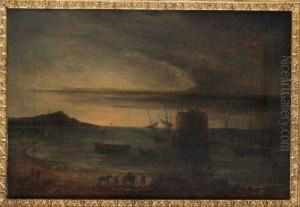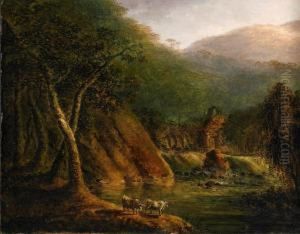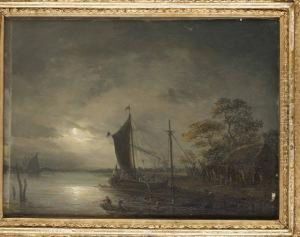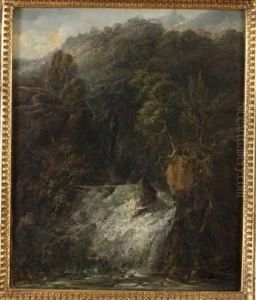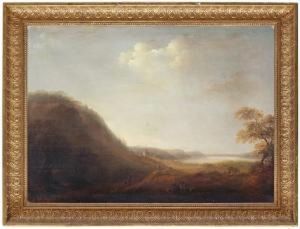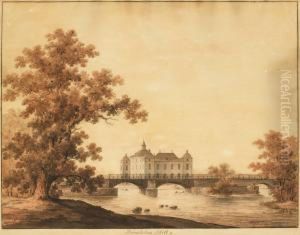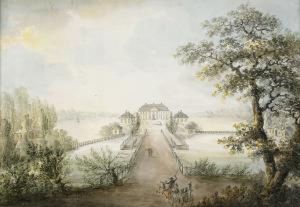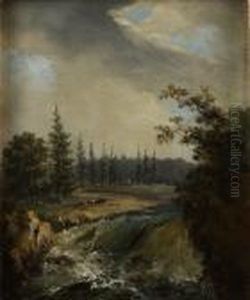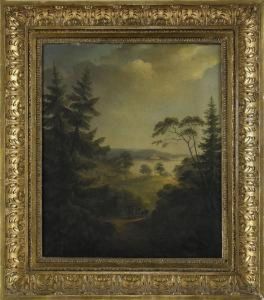Pehr Gustaf Von Heideken Paintings
Pehr Gustaf von Heideken was a Swedish artist born on August 29, 1777, in Gothenburg, Sweden. He is primarily known for his contributions as a portrait painter, although not as widely recognized as some of his contemporaries. Heideken's life and career were anchored in his Swedish heritage, and he developed his skills in the context of the Swedish art scene of the late 18th and early 19th centuries.
Heideken's artistic journey began with his studies at the Royal Swedish Academy of Arts in Stockholm, where he was exposed to the prevailing neoclassical aesthetics of the time. This period was marked by a fascination with the classical past and an emphasis on formal elegance and clarity, which can be seen in Heideken's works. After completing his education, he embarked on a career as a portraitist, capturing the likenesses of various Swedish figures.
Throughout his career, Pehr Gustaf von Heideken became known for his attention to detail and his ability to capture the character and social standing of his sitters. His portraits often depicted members of the Swedish nobility and bourgeoisie, and through these commissions, he secured his reputation as a skilled artist. Despite his focus on portraiture, there is relatively little documentation of Heideken's personal life or his broader impact on Swedish art, which may contribute to his lesser-known status compared to other artists of his time.
Heideken's contribution to Swedish art can also be seen in the context of the cultural and political changes taking place during his lifetime. The late 18th and early 19th centuries were a period of transformation in Sweden, with shifts in political power and the development of a more prominent national cultural identity. Heideken's portraits offer a window into this era, reflecting the styles and sensibilities of the Swedish elite.
Pehr Gustaf von Heideken passed away on November 17, 1845, in Stockholm. Although he may not have achieved the same level of fame as some of his European contemporaries, his work remains a valuable part of Sweden's artistic heritage, offering insights into the society and culture of his time. Today, his paintings can be found in Swedish museums and collections, where they continue to be studied and appreciated by art historians and enthusiasts alike.
